
Introduction
Welcome to Warsaw, the dynamic capital city of Poland and a vibrant hub of culture, history, and innovation. Situated on the banks of the Vistula River, Warsaw beckons visitors with its captivating blend of ancient charm and modern energy. As one of Europe’s most cosmopolitan cities, Warsaw boasts a rich tapestry of architectural styles, from the meticulously reconstructed Old Town, a UNESCO World Heritage site, to the sleek skyscrapers of its bustling city centre. Steeped in centuries of history, Warsaw has endured the trials of war and occupation, emerging stronger and more resilient than ever. Today, it stands as a symbol of Poland’s indomitable spirit and a testament to the enduring power of human perseverance.
Prepare to be captivated by Warsaw’s myriad attractions and experiences, each offering a glimpse into the city’s storied past and vibrant present. Wander through the cobblestone streets of the Old Town, where medieval charm mingles with colourful facades and bustling market squares. Immerse yourself in the rich cultural heritage of Warsaw’s museums, galleries, and theatres, which showcase the works of renowned artists, musicians, and performers from across Poland and beyond. Indulge your senses in the flavours of Polish cuisine, from hearty pierogi and traditional żurek to decadent pastries and aromatic coffees. Whether you’re exploring historic landmarks, sampling local delicacies, or simply soaking in the bustling ambience of the city streets, Warsaw promises an exhilarating and unforgettable experience for visitors of all interests and backgrounds.
Table of Contents
Map of the Best Things to Do in Warsaw
Warsaw Old Town and Market Place
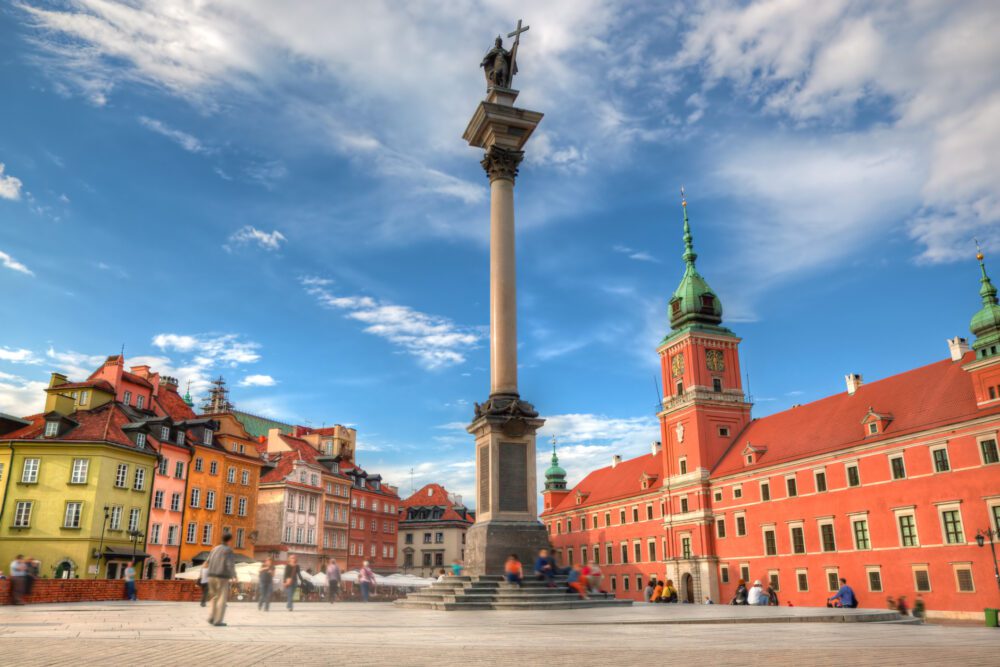
Step into the heart of Warsaw’s history with a visit to the Old Town and Market Place, where the city’s medieval roots come to life amidst a backdrop of charming cobblestone streets and colourful facades. Despite being nearly decimated during World War II, Warsaw’s Old Town was meticulously reconstructed to its former glory, earning it recognition as a UNESCO World Heritage site. Stroll through the historic Market Place, the bustling centre of the Old Town, where merchants once traded goods and townsfolk gathered for festivals and celebrations. Admire the striking architecture of the Old Town’s medieval buildings, including the iconic Royal Castle and the towering spires of St. John’s Cathedral, which stand as enduring symbols of Warsaw’s resilience and determination.
Practical tip: Begin your exploration of the Old Town and Market Place by joining a guided walking tour, which offers insightful commentary on the history and significance of the area’s landmarks. Be sure to wear comfortable shoes, as the cobblestone streets can be uneven and challenging to navigate. Take time to wander through the narrow alleyways and hidden courtyards of the Old Town, where you’ll discover charming cafes, artisan shops, and quaint galleries tucked away amidst the historic architecture. Consider visiting the Warsaw Historical Museum, located in the Old Town Market Place, to delve deeper into the city’s past and learn about the reconstruction efforts that transformed Warsaw into the vibrant metropolis it is today.
The Royal Castle
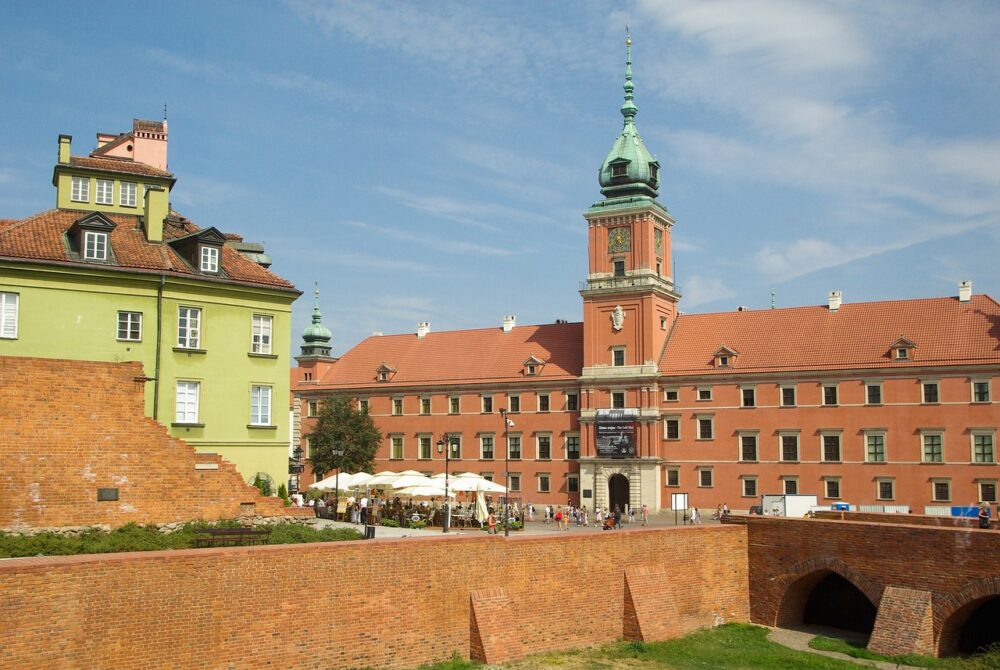
Perched majestically atop Warsaw’s Old Town, the Royal Castle stands as a beacon of Poland’s regal heritage and architectural splendour. Originally constructed in the 14th century as a fortified residence for the Masovian dukes, the castle underwent numerous transformations over the centuries, eventually becoming the official residence of Polish monarchs. Tragically, the castle was reduced to ruins during World War II, but like much of Warsaw’s Old Town, it was meticulously reconstructed in the post-war years, using historical drawings and archival photographs as reference. Today, visitors can marvel at the castle’s exquisite facade, adorned with ornate sculptures and decorative details, and explore its opulent interiors, which showcase a rich array of period furnishings, royal portraits, and priceless works of art.
Practical tip: To make the most of your visit to the Royal Castle, consider joining a guided tour led by knowledgeable docents who can provide insights into the castle’s history, architecture, and royal inhabitants. Be sure to check the castle’s opening hours and admission fees in advance, as they may vary depending on the season and special exhibitions. Take time to explore the castle’s picturesque gardens and courtyards, which offer panoramic views of the Old Town and the Vistula River below. Don’t miss the opportunity to visit the castle’s impressive Great Assembly Hall and the royal apartments, where you can immerse yourself in the grandeur and elegance of Poland’s royal past.
Fryderyk Chopin Concert
Experience the timeless melodies of Frederic Chopin, Poland’s beloved composer, with a Chopin concert in the left wing of the Royal Castle. Chopin, a native of Warsaw, left an indelible mark on the world of classical music with his hauntingly beautiful compositions, which continue to resonate with audiences across the globe. The Royal Castle’s left-wing provides an intimate and atmospheric setting for these concerts, where visitors can immerse themselves in the enchanting sounds of Chopin’s piano masterpieces while surrounded by the historic grandeur of the castle. From soulful nocturnes to lively polonaises, the concert offers a captivating journey through Chopin’s musical legacy, providing a unique opportunity to experience his works in the very city that inspired them.
Practical tip: To ensure a memorable experience at the Chopin concert, I recommend purchasing tickets in advance, as these concerts are popular and often sell out quickly. Consider arriving early to secure good seats and take time to explore the Royal Castle’s grounds and exhibitions before the concert begins. Dress appropriately for the occasion, as the concert hall may have a formal dress code, and bring along a sweater or shawl for added comfort. During intermission, take the opportunity to mingle with fellow concertgoers and perhaps enjoy a glass of wine or coffee in the castle’s charming surroundings.
POLIN Museum of the History of Polish Jews
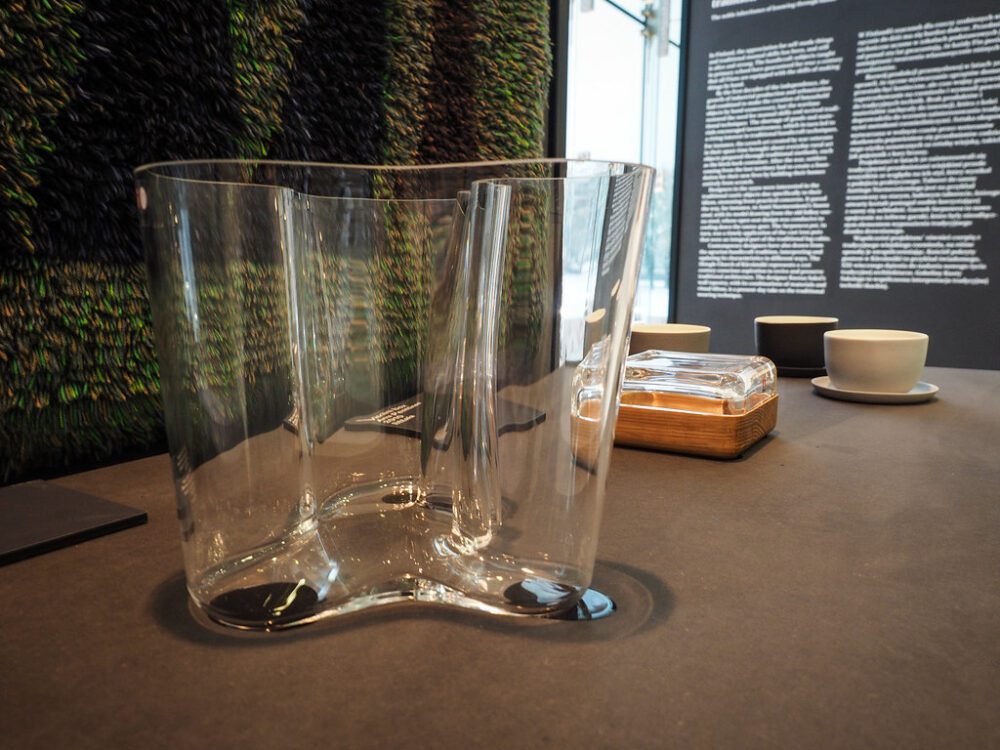
Dive deep into the rich tapestry of Jewish history and culture at the POLIN Museum of the History of Polish Jews, a poignant testament to centuries of shared heritage and resilience. Located in Warsaw’s vibrant Muranów district, the museum occupies a site with profound historical significance, situated in the heart of what was once the Warsaw Ghetto during World War II. Opened in 2013, the POLIN Museum offers a comprehensive exploration of the 1,000-year history of Polish Jews, from their medieval beginnings to the present day. Through immersive exhibitions, interactive displays, and multimedia installations, visitors are invited to trace the vibrant tapestry of Jewish life in Poland, from moments of triumph and creativity to periods of persecution and tragedy.
Practical tip: Plan your visit to the POLIN Museum ahead of time to fully immerse yourself in its rich offerings. Consider joining a guided tour led by knowledgeable docents, who can provide valuable insights into the museum’s exhibits and the broader historical context of Polish Jewish heritage. Be sure to allocate plenty of time for exploration, as the museum’s extensive collection and interactive displays can easily fill several hours. Take advantage of the museum’s audio guide rental service, available in multiple languages, to enhance your understanding and appreciation of the exhibits. After your visit, take time to reflect on your experience in the museum’s serene courtyard or nearby park, where you can contemplate the enduring legacy of Polish Jews and their contributions to culture, art, and society.
Krakowskie Przedmieście
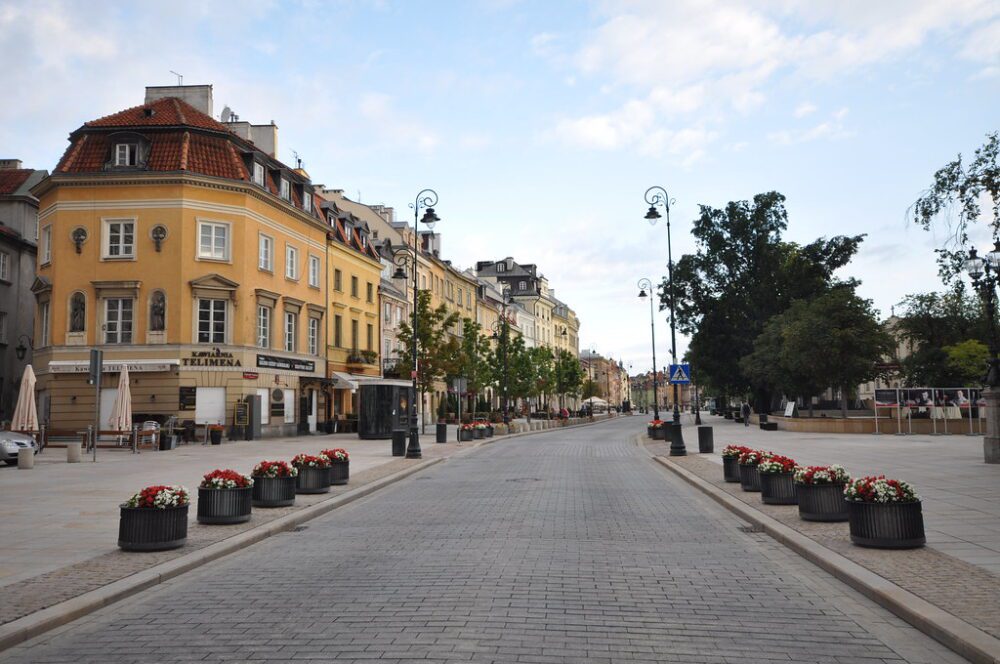
Krakowskie Przedmieście, one of Warsaw’s most iconic thoroughfares, beckons visitors with its elegant charm and rich historical significance. Stretching from the Royal Castle to the modernist edifice of the Palace of Culture and Science, this grand boulevard has been a focal point of Warsaw’s cultural and social life for centuries. Originally an extension of the royal route leading to the city of Krakow, Krakowskie Przedmieście flourished during the Renaissance and Baroque periods, attracting nobility, intellectuals, and artists to its palatial residences, churches, and academies. Despite suffering extensive damage during World War II, the boulevard was meticulously rebuilt in the post-war years, preserving its architectural heritage and timeless allure.
Practical tip: Explore Krakowskie Przedmieście on foot to fully appreciate its historic charm and architectural splendour. Begin your journey at the Royal Castle, where you can marvel at its majestic facade and explore its opulent interiors. Continue along the boulevard, stopping to admire landmarks such as the Presidential Palace, St. Anne’s Church, and the University of Warsaw. Take time to wander through the leafy avenues and picturesque squares that line Krakowskie Przedmieście, soaking in the ambience of this historic neighbourhood. Be sure to visit the numerous cafes, restaurants, and boutiques that dot the boulevard, where you can savour traditional Polish cuisine, indulge in a spot of shopping, or simply relax and people-watch while enjoying a cup of coffee or glass of wine.
Copernicus Science Centre
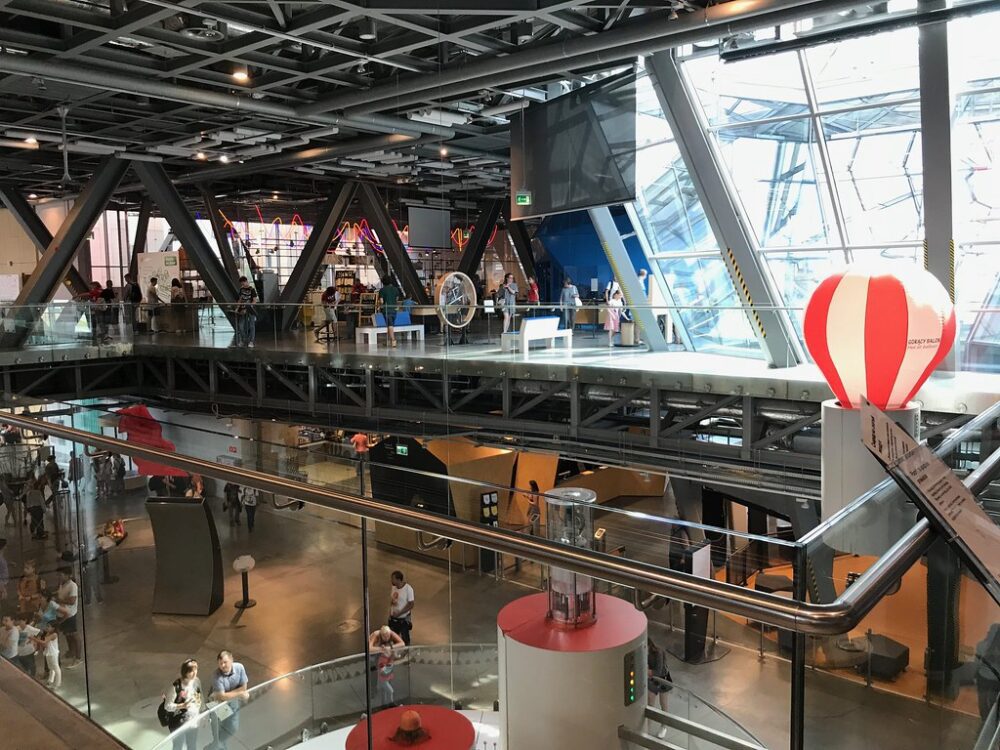
The Copernicus Science Centre stands as a beacon of innovation and discovery on the banks of the Vistula River in Warsaw. Named after the renowned Polish astronomer Nicolaus Copernicus, the centre aims to inspire curiosity and foster a love of science through its interactive exhibits, hands-on experiments, and immersive experiences. Opened in 2010, the Copernicus Science Centre quickly became one of Poland’s most popular attractions, drawing visitors of all ages with its diverse array of educational programs and engaging displays. From exploring the wonders of the universe in the planetarium to experimenting with the principles of physics, chemistry, and biology in the laboratory, the centre offers a dynamic and interactive environment where visitors can learn, play, and discover the marvels of science.
Practical tip: When planning your visit to the Copernicus Science Centre, consider purchasing tickets online in advance to avoid long queues at the entrance. Arrive early to make the most of your time exploring the centre’s numerous exhibits and activities, as there is plenty to see and do. Be sure to check the schedule for special events, workshops, and demonstrations, which offer opportunities to engage with science in exciting and unexpected ways. Don’t miss the chance to visit the rooftop terrace, where you can enjoy panoramic views of Warsaw’s skyline and the Vistula River while relaxing in the outdoor seating area.
Fryderyk Chopin Museum
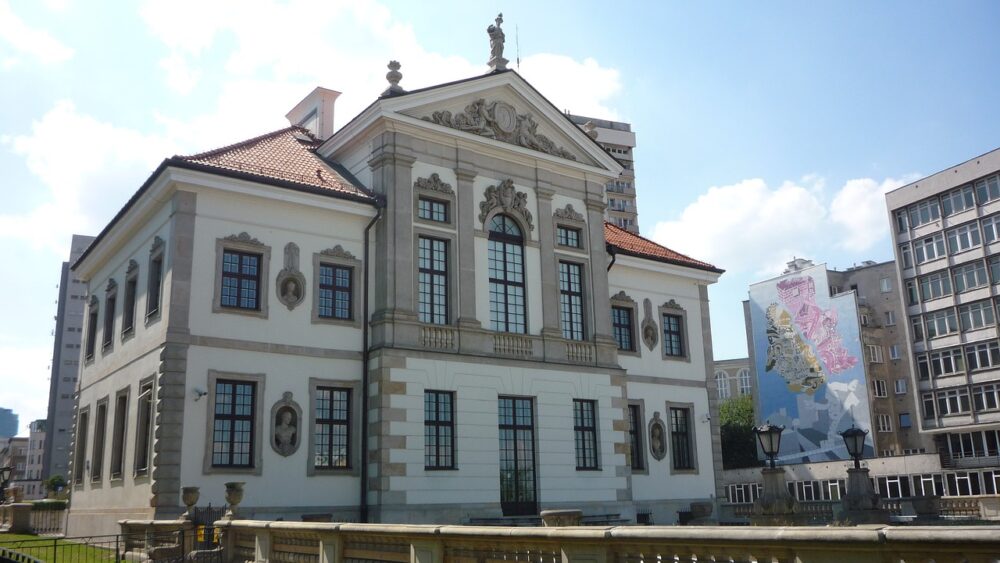
Located in Warsaw’s historic Ostrogski Palace, the Chopin Museum is a captivating tribute to the life and legacy of Poland’s most celebrated composer, Frederic Chopin. Housed within the elegant confines of the palace, which dates back to the 17th century, the museum offers visitors a comprehensive journey through Chopin’s world, from his early years in Warsaw to his rise to international fame as a virtuoso pianist and composer. The museum’s extensive collection includes original manuscripts, letters, personal belongings, and musical instruments belonging to Chopin, providing intimate insights into his creative process and personal life. Through interactive exhibits, multimedia installations, and audiovisual presentations, visitors can explore Chopin’s music, influences, and enduring impact on music history, making it a must-visit destination for music lovers and cultural enthusiasts alike.
Practical tip: Plan your visit to the Chopin Museum ahead of time to make the most of your experience. Consider purchasing tickets online in advance to skip the queues and secure your entry to the museum. Be sure to allocate plenty of time to explore the museum’s various galleries and exhibits, as there is a wealth of information to discover. Take advantage of the museum’s audio guide rental service, available in multiple languages, to enhance your understanding of Chopin’s life and music as you navigate through the museum. After your visit, consider taking a leisurely stroll through the neighbouring Łazienki Park, where you can visit the Chopin Monument and relax amidst the scenic beauty of this tranquil oasis in the heart of Warsaw.
Nowy Swiat Street
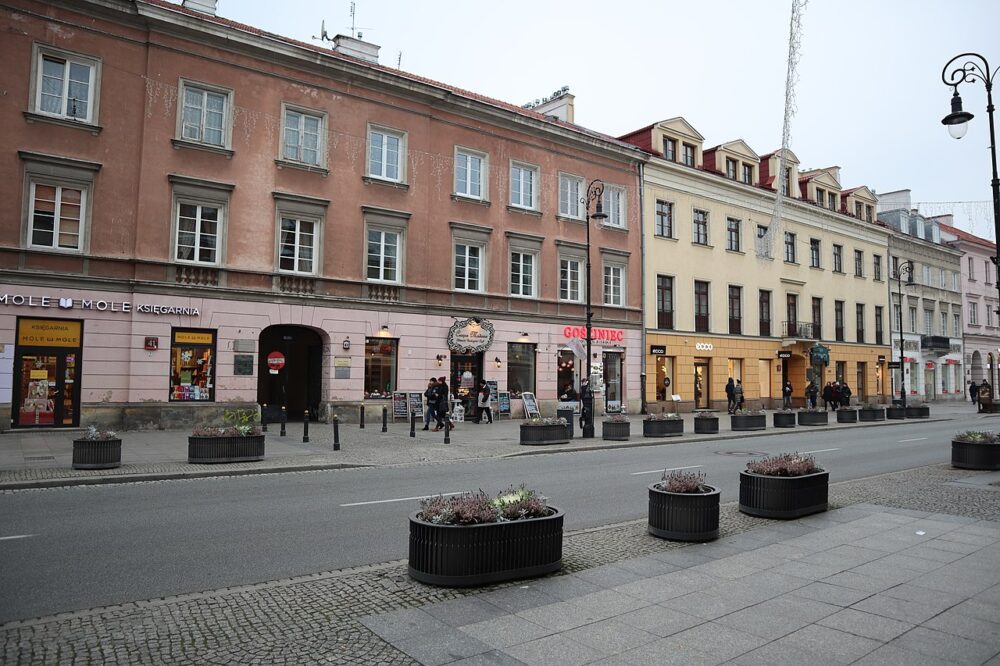
Nowy Świat, or “New World,” is a bustling thoroughfare in Warsaw that exudes charm, history, and vibrant energy. Originally established in the 17th century, Nowy Świat was initially a royal route connecting Warsaw’s Old Town with the royal residences located in the southern part of the city. Over the centuries, the street evolved into a bustling commercial and cultural hub, lined with elegant townhouses, stylish boutiques, cosy cafes, and trendy restaurants. Today, Nowy Świat remains one of Warsaw’s most iconic streets, beloved by locals and visitors alike for its picturesque architecture, lively atmosphere, and eclectic mix of shops and eateries.
Practical tip: To fully experience the charm of Nowy Świat, take your time strolling along the pedestrian-friendly boulevard, soaking in the ambience and exploring its many attractions. Begin your journey at the iconic Krakowskie Przedmieście end of Nowy Świat, where you can admire landmarks such as the Holy Cross Church and the Presidential Palace. As you make your way down the street, be sure to stop by the numerous cafes and bakeries that line the route, where you can sample delicious pastries and enjoy a cup of coffee while watching the world go by. Don’t miss the opportunity to browse the boutiques and shops that dot Nowy Świat, offering everything from designer fashion and handmade crafts to unique souvenirs and gifts.
Palace of Culture and Science
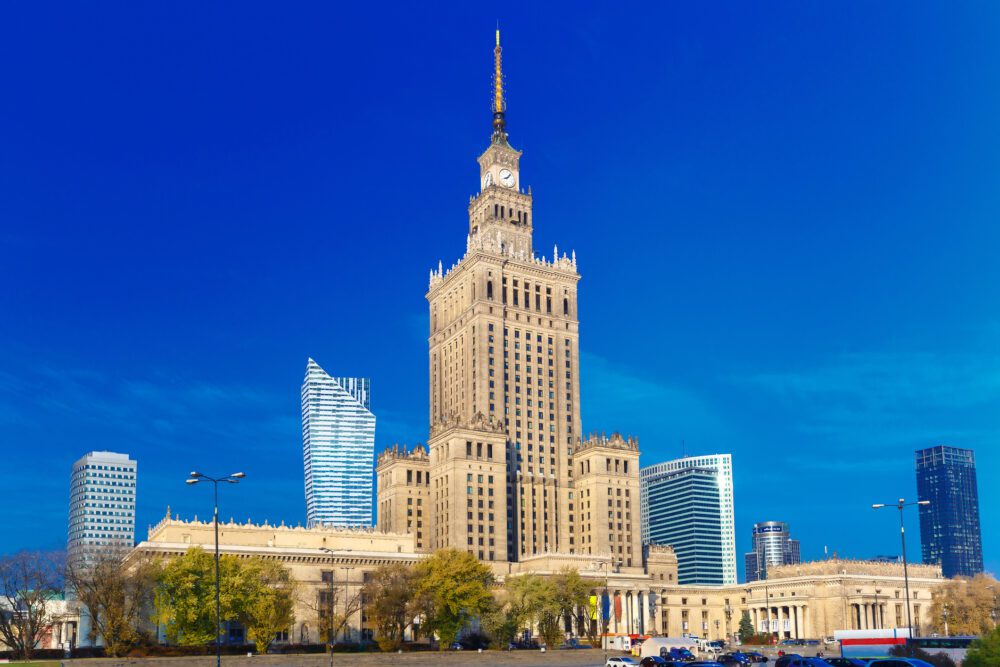
The Palace of Science and Culture, affectionately known as the “Palace of Culture” or “PKiN” by locals, stands as a towering symbol of Warsaw’s resilience and architectural grandeur. Built between 1952 and 1955 as a “gift from the Soviet Union to the Polish nation,” the palace was intended to showcase socialist ideals and serve as a cultural centre for the city. Designed by Soviet architect Lev Rudnev, the building’s imposing Stalinist architecture features a combination of Gothic and Renaissance elements, crowned by a distinctive spire that reaches a height of 237 meters, making it the tallest building in Poland. Despite its controversial history, the Palace of Culture has become an integral part of Warsaw’s skyline and a beloved landmark, serving as a venue for concerts, exhibitions, conferences, and cultural events.
Practical tip: When visiting the Palace of Science and Culture, start your exploration by taking a ride to the observation deck on the 30th floor, where you can enjoy panoramic views of Warsaw and beyond. Be sure to bring your camera to capture the breathtaking vistas from this vantage point. After taking in the views, explore the various cultural institutions housed within the palace, including theatres, museums, and galleries, which offer a diverse array of exhibitions and performances. Consider attending a concert or theatrical production at one of the palace’s venues, where you can experience the vibrant cultural scene of Warsaw firsthand. Before leaving, take a moment to admire the palace’s ornate interiors, adorned with marble, chandeliers, and intricate mosaics, which harken back to a bygone era of grandeur and elegance.
Warsaw Uprising Museum
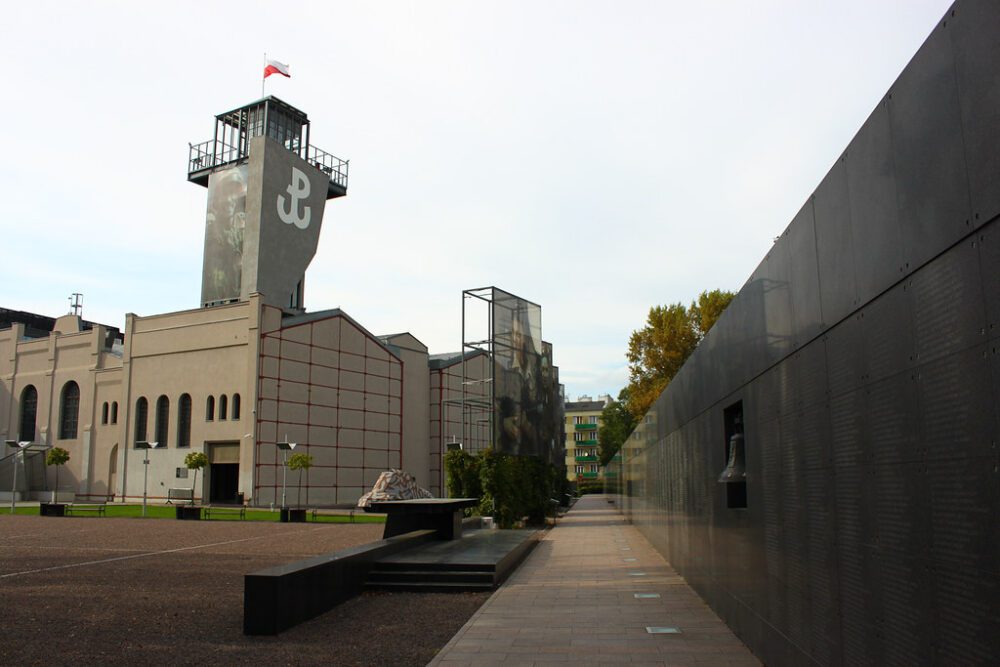
The Warsaw Uprising Museum stands as a poignant tribute to one of the most pivotal events in Poland’s history—the Warsaw Uprising of 1944. Located in a former tram power station, the museum offers a comprehensive and immersive exploration of the 63-day rebellion, during which the Polish Home Army fought valiantly against Nazi occupation forces in a bid to liberate Warsaw from German control. Through interactive exhibits, artefacts, photographs, and eyewitness accounts, visitors are transported back in time to the harrowing days of the uprising, experiencing the courage, sacrifice, and resilience of the Polish people firsthand. From the clandestine printing of underground newspapers to the construction of makeshift weapons and barricades, the museum vividly portrays the extraordinary efforts of ordinary citizens who rose up against tyranny and oppression in the name of freedom and independence.
Practical tip: To make the most of your visit to the Warsaw Uprising Museum, plan to spend several hours exploring its extensive exhibits and multimedia displays. Consider starting your visit on the top floor, where you can watch a short film providing an overview of the uprising’s history and context. As you make your way through the museum’s galleries, take time to read the personal stories of resistance fighters, civilians, and survivors, whose voices offer powerful insights into the human cost of war and occupation. Be sure to visit the museum’s outdoor courtyard, where you can see a replica of a B-24 Liberator bomber used during the uprising and pay your respects at the memorial wall honouring the fallen heroes of the uprising. Before leaving, consider purchasing a souvenir or memento from the museum’s gift shop, where you can find books, posters, and other items related to the Warsaw Uprising and Polish history.
Lazienki Park and Palace

Łazienki Park, also known as the Royal Baths Park, is a verdant oasis in the heart of Warsaw, renowned for its scenic beauty, historic landmarks, and cultural significance. Originally designed in the 17th century as a summer residence for King Stanisław August Poniatowski, the park encompasses lush gardens, tranquil ponds, and majestic palaces, providing a picturesque setting for leisurely strolls, picnics, and outdoor activities. One of the park’s most iconic landmarks is the Palace on the Water, a neoclassical gem nestled amidst the park’s verdant landscapes. Built in the 18th century as a royal residence, the palace is adorned with elegant columns, ornate sculptures, and opulent interiors, reflecting the grandeur and sophistication of Poland’s royal heritage.
Practical tip: When exploring Łazienki Park, start your visit at the Palace on the Water, where you can admire its architectural beauty and learn about its storied history through guided tours and exhibitions. Be sure to stroll along the park’s scenic pathways, which wind through lush forests, manicured lawns, and charming pavilions, offering delightful surprises at every turn. Consider renting a rowboat to paddle around the park’s tranquil lake, taking in the serene beauty of the surroundings from a different perspective. Don’t miss the chance to visit the Łazienki Palace Museum, located within the park, where you can discover a treasure trove of art, artefacts, and historical memorabilia related to Poland’s royal past. Before leaving, take time to relax and unwind in the park’s idyllic settings, perhaps enjoying a leisurely picnic or attending a classical concert at the outdoor amphitheatre.
Vistula River Cruise
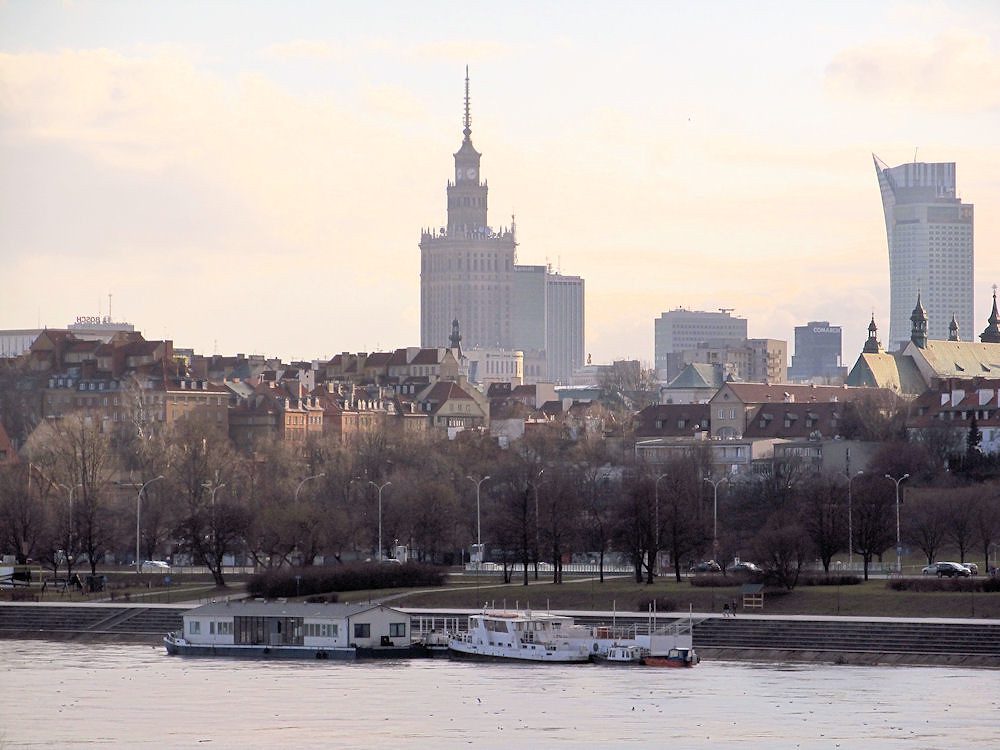
Embark on a scenic Vistula River cruise and discover Warsaw’s enchanting skyline and historic landmarks from a unique vantage point. The Vistula, Poland’s longest river, has played a central role in the country’s history and culture for centuries, serving as a vital waterway for trade, transportation, and recreation. Today, it offers visitors the opportunity to enjoy leisurely boat cruises along its meandering waters, providing panoramic views of Warsaw’s iconic bridges, waterfront promenades, and architectural wonders. Whether you opt for a daytime cruise to soak in the sights under the sun or an evening cruise to admire the city’s illuminated skyline against the backdrop of the night sky, a Vistula River cruise promises a memorable and enchanting experience for travellers of all interests.
Practical tip: When planning your Vistula River cruise, consider booking tickets in advance to secure your preferred departure time and seating arrangements. Choose from a variety of cruise options, including sightseeing tours, dinner cruises, and themed excursions, to tailor your experience to your interests and budget. Be sure to dress appropriately for the weather and bring along sunscreen and a hat if you plan to cruise during the daytime. For evening cruises, consider bringing a light jacket or sweater, as temperatures may cool down on the water after sunset. During the cruise, keep your camera handy to capture the breathtaking views and memorable moments along the way. Don’t forget to relax and enjoy the journey, savouring the gentle rhythm of the river and the enchanting beauty of Warsaw’s skyline unfolding before your eyes.
Polish Vodka Museum
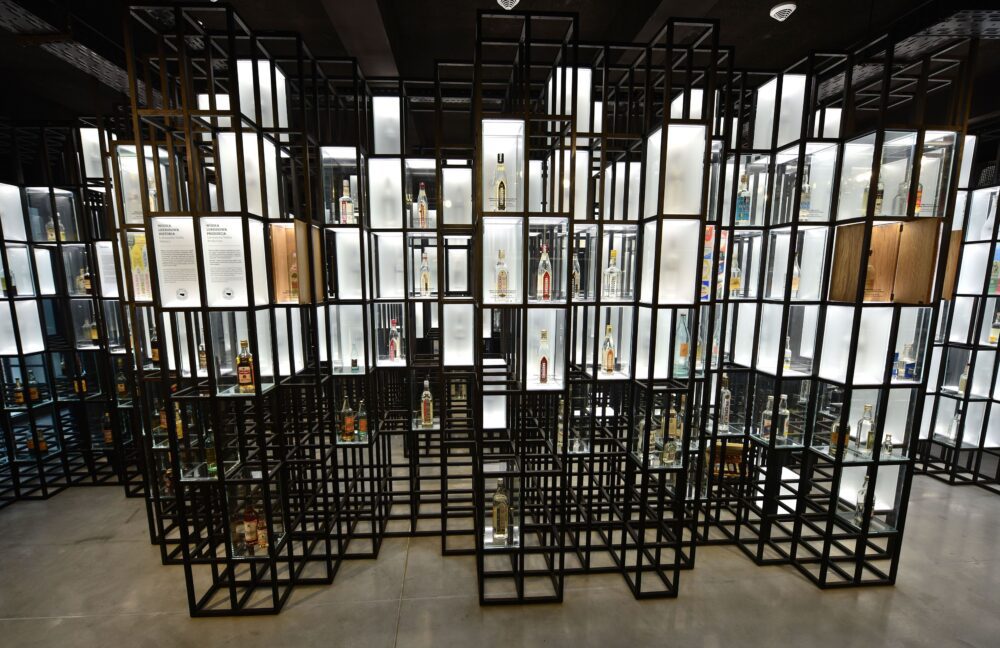
Step into the fascinating world of Polish vodka at the Polish Vodka Museum, where visitors can delve into the rich history, traditions, and craftsmanship behind Poland’s most famous spirit. Located in the heart of Warsaw’s Praga district, the museum offers an immersive journey through the centuries-old art of vodka production, from the distillation process to the cultural significance of this beloved beverage. Learn about the origins of Polish vodka, which dates back to the Middle Ages, and discover how it evolved from a humble peasant drink to a symbol of Polish hospitality and national pride. Through interactive exhibits, multimedia presentations, and guided tours, visitors can explore the different varieties of vodka, regional distillation techniques, and the role of vodka in Polish culture, society, and celebrations.
Practical tip: Plan your visit to the Polish Vodka Museum in advance to ensure availability and make the most of your experience. Consider purchasing tickets online to skip the queues and take advantage of any discounts or special offers. Be sure to allocate enough time to explore the museum’s various exhibits and displays, as there is plenty to see and learn. Don’t miss the opportunity to participate in a vodka-tasting experience, where you can sample a selection of premium Polish vodkas and learn how to appreciate the nuanced flavours and aromas of this iconic spirit. After your visit, consider browsing the museum’s gift shop, where you can purchase bottles of Polish vodka, unique souvenirs, and artisanal gifts to commemorate your experience.
Wilanów Palace
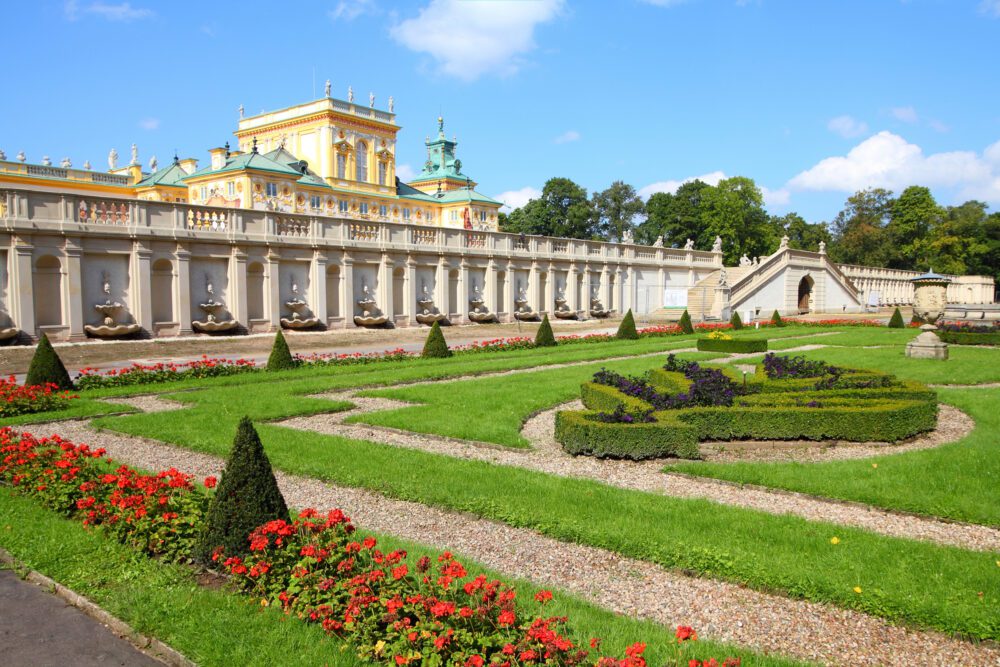
Nestled amidst beautifully landscaped gardens and parkland, Wilanów Palace stands as a shining jewel of Polish Baroque architecture and a testament to the grandeur of Poland’s royal past. Originally constructed in the late 17th century as a summer residence for King Jan III Sobieski, the palace boasts an impressive array of architectural styles, from its elegant façade adorned with ornate sculptures and statues to its opulent interiors filled with priceless works of art and furnishings. Visitors to Wilanów Palace can wander through its lavishly decorated chambers, including the Great Hall, the King’s Apartments, and the White Hall, marvelling at the exquisite craftsmanship and attention to detail that epitomize the Baroque era.
Practical tip: To make the most of your visit to Wilanów Palace, consider joining a guided tour led by knowledgeable docents who can provide insights into the palace’s history, architecture, and royal residents. Be sure to check the palace’s opening hours and admission fees in advance, as they may vary depending on the season and special exhibitions. Take time to explore the palace’s meticulously manicured gardens and parkland, which feature picturesque pathways, tranquil ponds, and charming pavilions. Don’t miss the opportunity to visit the Palace Museum, located within the palace complex, where you can learn about the history of Wilanów and its role in Polish culture through interactive exhibits and multimedia presentations.
Day Trips from Warsaw
Auschwitz-Birkenau Concentration Camp Memorial
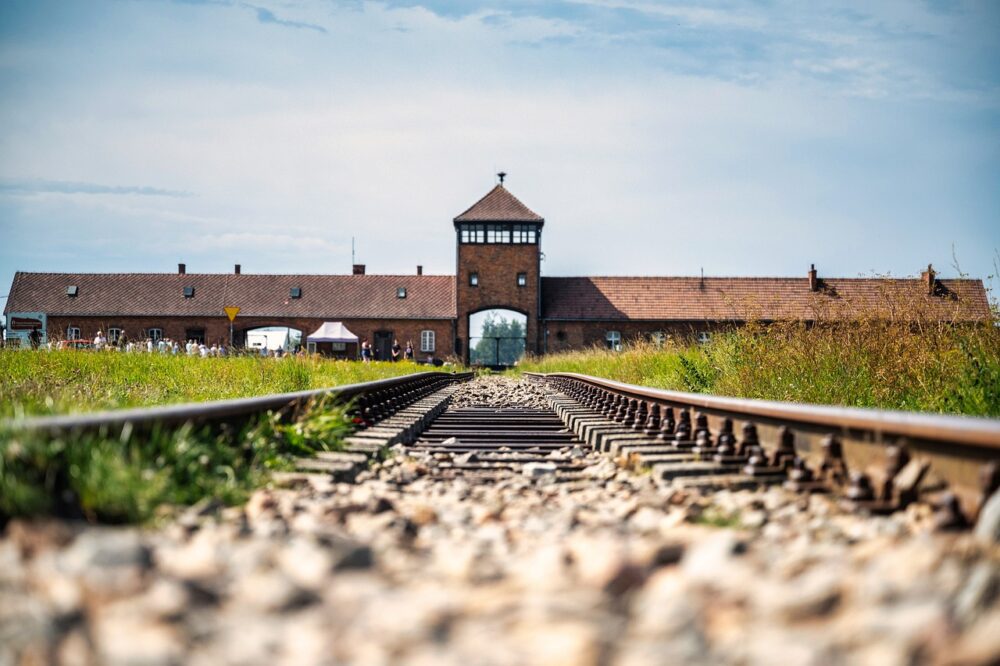
Embark on a solemn and educational day trip to Auschwitz-Birkenau, a poignant reminder of the atrocities of the Holocaust and a testament to the resilience of the human spirit. Located approximately 60 kilometres west of Krakow, Auschwitz-Birkenau was the largest Nazi concentration and extermination camp complex during World War II, where over a million men, women, and children, primarily Jews, were systematically murdered. Today, the site serves as a memorial and museum, preserving the harrowing history of the Holocaust and honouring the memory of its victims. Visitors to Auschwitz-Birkenau can explore the barracks, gas chambers, and crematoria of the former concentration camp, bearing witness to the horrors endured by those who were imprisoned there. Guided tours provide invaluable insights into the camp’s history, while exhibits and artefacts offer a sobering reminder of the human cost of hatred and intolerance.
Treblinka Concentration Camp Memorial

Embark on a sombre yet essential day trip to Treblinka Camp, a stark reminder of the atrocities committed during the Holocaust and a poignant tribute to the millions of lives lost. Located around 100 kilometres northeast of Warsaw, Treblinka was one of the deadliest Nazi extermination camps, where an estimated 800,000 to 1 million Jews were systematically murdered between July 1942 and October 1943. Today, the site serves as a memorial and museum, preserving the memory of the victims and honouring their legacy. Visitors to Treblinka Camp can explore the memorial complex, which includes symbolic markers, commemorative plaques, and reconstructed elements of the former camp, such as the railway ramp and remnants of the gas chambers and crematoria. Guided tours offer invaluable insights into the camp’s history, the experiences of those who were imprisoned there, and the broader context of the Holocaust, providing a sobering and educational experience that underscores the importance of remembrance and understanding.
Conclusion
Warsaw emerges as a city of profound historical significance, cultural richness, and vibrant energy, offering visitors a wealth of experiences that celebrate its storied past and dynamic present. From exploring the meticulously reconstructed Old Town and marvelling at the grandeur of the Royal Castle to paying homage to the resilience of the Polish people at sites like the Warsaw Uprising Museum and Auschwitz-Birkenau, every corner of the city reveals layers of history and heritage waiting to be uncovered.
Warsaw’s thriving arts and culinary scenes, its picturesque parks and palaces, and its bustling markets and river cruises provide endless opportunities for exploration and enjoyment, ensuring that visitors leave with lasting memories and a deep appreciation for all that this remarkable city has to offer. Whether you’re drawn to its historical landmarks, cultural institutions, or vibrant street life, Warsaw invites you to immerse yourself in its rich tapestry of experiences and discover the essence of Poland’s capital city.
